The Roland FP-30 digital piano is is now discontinued. It came out in 2015 and has just been replaced by the new 2021 FP-30X. Go to the following link to read my review of the current model FP-30X: FP-30X Review –
The previous model FP-30 has 35 instrument sounds, 128 notes of maximum polyphony, 8 drum rhythm patterns, a 1-part MIDI player-recorder, and all of that going through a stereo 22 watt internal speaker system housed in an attractive 31 lb cabinet. With piano weighted keys and a stereo piano sound, the FP-30 may be a good portable digital piano for you regardless of your piano playing skill level
🎹 | UPDATED REVIEW – Roland FP-30 Portable Digital Piano is now discontinued and no longer available – April 1, 2021 – PREVIOUS REVIEW OF FP-30 – The Roland company offers a portable 88-key self contained digital piano in the under $700 price range called the FP-30 which competes with the other top name (Japanese) brand portable digital pianos including Yamaha, Kawai, Casio, and Korg. Up until now the other brands have dominated this lower price range with their lightweight portable 88-key weighted action digital pianos. But the Roland FP-30 ($699 internet price), which is basically the portable version of the higher priced F-140R is fairly good competition now against the other brands in a number of ways but it has been out for awhile so perhaps we see a new model at some point next year. click on pics for larger views.
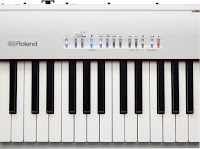 As far as the FP-30 goes, Roland has changed and improved nearly everything about this piano as compared to their previous models including the key action, key sensor system, piano sound, and pedaling which are the fundamentals in all pianos. Beyond that, the piano has the upgraded light-up translucent buttons taken from their discontinued FP50 which adds to the modern contemporary style of this piano and also makes it easier to see the buttons in darker places. But it’s really all about the key action, piano sound, and pedaling over the the previous models which is what makes this model a good choice overall, but with a few exceptions as you will read about below. The key action in the FP-30 is more authentic and responsive than previous Roland models although this does not mean the FP-30 key action is the best one out there in this price range, but it does mean that for the Roland company, it’s a very nice improvement over previous pianos.
As far as the FP-30 goes, Roland has changed and improved nearly everything about this piano as compared to their previous models including the key action, key sensor system, piano sound, and pedaling which are the fundamentals in all pianos. Beyond that, the piano has the upgraded light-up translucent buttons taken from their discontinued FP50 which adds to the modern contemporary style of this piano and also makes it easier to see the buttons in darker places. But it’s really all about the key action, piano sound, and pedaling over the the previous models which is what makes this model a good choice overall, but with a few exceptions as you will read about below. The key action in the FP-30 is more authentic and responsive than previous Roland models although this does not mean the FP-30 key action is the best one out there in this price range, but it does mean that for the Roland company, it’s a very nice improvement over previous pianos.


The improved PHA4 “Standard” graded weighted piano key actionn in the FP30 is also in is from their higher priced F-140R model The keys have Roland’s proprietary ivory & ebony feel keys which offers good looks, comfort, and sweat absorbing properties for those people who have sweaty hands & fingers:). The key action feels solid under the fingers, is balanced from left to right although the key action is noticeably firmer to press down than some other brands, and for some people they may feel the extra weight and slower key movement can be a bit fatiguing to play after awhile. Roland also included an escapement feature in the key action which tries to simulate what grand piano keys feel like when being played very softly and slowly and feeling the slight hesitation pushing the keys down that you don’t normally feel on an upright piano. However, the “escapement feature” in the FP-30 is not actually like a real grand piano and is much too subtle, so being without it would not be a problem at all in my opinion since is does not feel real. The key action seems well built and the keys themselves are relatively quiet compared to past Roland key actions when moving up & down, but there is still a bit of clunking noise when you are playing the keys harder and more aggressively when the keys hit the bottom. However, the keys are somewhat heavy/firm to press down and personally we like piano key actions that are weighted by are a bit lighter and your fingers can then move across the keys more easily which what most real acoustic pianos feel like when playing the keys. Since key action is the #1 most important thing to consider when shopping for a piano of any type, I believe that overall this new FP-30 is competitive to some of the other name brands but there are also some better options.
 The 2nd most important consideration in shopping for a digital piano is the acoustic piano sound realism and expression. Roland uses what they call “SuperNATURAL” piano sound which is their way of saying that they have sampled a real grand piano using proprietary sound technology to capture a real piano sound. Capturing a real acoustic piano sound in a digital instrument is not an easy or inexpensive task. The more organic and natural the piano sound is including being stretch tuned by a professional piano tuner, the more expression and tonal characteristics you’ll be able to get out of it. Expression and tonal dynamics with smooth incremental
The 2nd most important consideration in shopping for a digital piano is the acoustic piano sound realism and expression. Roland uses what they call “SuperNATURAL” piano sound which is their way of saying that they have sampled a real grand piano using proprietary sound technology to capture a real piano sound. Capturing a real acoustic piano sound in a digital instrument is not an easy or inexpensive task. The more organic and natural the piano sound is including being stretch tuned by a professional piano tuner, the more expression and tonal characteristics you’ll be able to get out of it. Expression and tonal dynamics with smooth incremental

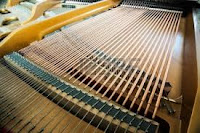
volume changes in the sound is the “key” to reproducing a quality piano which can be used for beginner to advanced players looking to get a piano they can grow into instead of grow out of. In other words, when you play a piece of piano music, the sound is resonate with good clear tones and a wide dynamic tonal range from mellow to bright and soft to loud just by changing playing the keys softer or harder. In the FP-30, the piano sound is recorded from an acoustic grand piano and you’ll be able to hear the string resonance (sympathetic) vibrations as well as what pianists refer to as “key off resonance” in the FP-30 piano sound. All of these things give the FP-30 a more organic nature to the piano sound than some other digital pianos. Many digital pianos in a variety of price ranges can sometimes sound antiseptic, digital, fake, and toy like. I found that overall the FP-30 had a nice natural quality to the piano sound from very soft (pianissimo) to very loud (fortissimo) with a noticeably good range of tonal colors which offers some nice sonic complexity. However, when playing the acoustic piano sounds on the FP-30, some of the notes exhibited an overly twangy metallic sound when playing harder with more force using more velocity when striking the keys. In a real piano, depending on the brand and model, some of the strings can also be a bit twangy or metallic sounding when striking the keys harder so this is not necessarily unusual and would be normal when the string is vibrating harder. But…this metallic, twangy sound is definitely overdone on many notes and may bother some ears out there so it just depends on the kind of piano sound you are looking for. There are three separate acoustic piano sounds on this piano but they are all fairly metallic sounding too with regard to dynamic tonal changes when playing the keys with more force. There is a function on the piano that allows the brilliance or brightness of a sound to be reduced to make it more mellow, but this function still does not reduce the overall twangy nature of the piano sound when playing more fortissimo. When a person plays pop or contemporary music then the brighter, twangier sound may be good and even contribute to some authenticity. But for other types of music such as classical or ballads, it may not be as appreciated because a more rounded, mellower tone may be more appropriate. So if you are looking for a more “mellow,” rich, and less twangy type of piano sound along with a full responsive tone, then this piano may not be right for you and the Kawai ES110 ($699 internet price) may be a better option so it just depends what is important to you. Roland also has a 3-sensor key action system allowing for good key repetition recognition along with their 128-note polyphony chip which is generally plenty of note memory. So there are definitely plenty of good features with regard to piano sound on the FP-30.
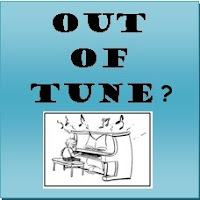
However, there is one important thing that all digital pianos should be able to do…and that is be able to be in tune and stay in tune regardless of the notes/chords you are playing. Regular pianos go out of tune often and constant tuning is needed and it’s expensive. Some people are more sensitive to a piano being out of tune than others, and for better or for worse, I am one of those people. Unfortunately, to me, the FP-30 sounds out of tune to me in a specific way. Well, what I mean by that is the entire piano is not out of tune. However, there are some noticeable (at least they are to me) note/chord combinations/intervals that are not in tune with each other in my opinion. In other words, when playing certain notes together, those notes sound out of tune with each other. When a piano tuner tunes a real acoustic piano, they use a tuning method called “stretch tuning.” Stretch tuning is a complex but popular method of piano tuning, but it basically means you are supposed to slightly over-tune (or stretch) some of the higher strings and slightly under-tune (stretch) some of the lower strings so that the piano sounds good across the 88 keys to account for a variety of harmonics and other tuning challenges. To do this the piano temperament in the piano needs to be set by the expert piano tuner, which means that a group of notes in the center of the piano are tuned in a certain way and then used as a reference to tune the rest of the strings in a real piano. Without the proper temperament being set by the tuner, some strings in the rest of the piano can become somewhat out-of-tune (sharp or flat) with other strings in combination with the stretch tuning method. A good, proper stretch tune can make the piano sound even better than it would otherwise be and add “color” and more “expression” to the overall piano sound. But whoever originally tuned the piano sound (sampled from a real piano) in the FP-30 could have done a better job in my opinion. Although I have a good ear when it comes to instruments being in tune or not, I am not a piano tuner so I asked an experienced independent piano tuner to check the Roland piano. He examined it and in his opinion agrees with my finding…the temperament was, overall, not set correctly, at least not in a way that is pleasing to some ears including mine. By the way, if you did not understand what I just said…don’t worry about it. All you need to know is that in my opinion, the FP30 is out-of-tune (it is to me) when playing certain notes (2,3, or more) together, especially when playing more slowly with certain note combinations.

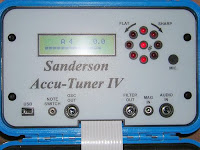
The out-of-tune tuning issue on the FP-30 is primarily about the relationship between notes in the bass section and the middle to upper octaves and it definitely sounds like there are note and chord combinations which are noticeably sharp on the upper notes of the chord combinations and not pleasant to my ears and some other people’s ears who have also heard this. Just to be clear, I have been around acoustic and digital pianos for well over 40 years as well as having been around expert piano tuners who tune concert grand pianos. There comes a point where too much stretch is, well, just too much., and on the Roland FP-30 there is no way to reduce the sharp notes or to turn off the stretch tuning or even to change to a different temperament. If I could change the temperament tuning then this may help the situation. I do not find this same issue on comparable Kawai, Yamaha, or Casio digital pianos in this same price range, just the Roland FP-30. It also depends on the style of music you play and the specific notes you are playing as well. But when I play digital pianos I tend to play many different notes, many styles of music, and am sensitive to notes that are noticeably sharp, and unfortunately the FP-30 is that way in my opinion. I also play and teach guitar (I own many fine guitars) and have done that for many years and understand guitar tunings, how to tune them (I tune them quite often), and the various harmonics and overtones involved, and guitars can have the same issues if you’re not very careful. When tuners tune real pianos, most of them use industry standard electronic tuning devices such as Peterson or Sanderson tuners (above left pics) that visually and electronically show how far sharp or flat a note is in relationship to another note so that mistakes or over/under-tuning can be avoided as much as possible. These digital tuners also measure how the notes correspond to certain stretch tunings and how far flat or sharp they may be. Other tuner/technicians use professional tuning apps on their mobile device which are quite advanced in technology. So with regard to the FP-30, at the very least, Roland could have given it the ability to modify or turn off the piano string stretch function as other digital pianos have so that tuning issues like what I described could be minimized or eliminated. In other words, give the user some control over the tunings and then all would be good.
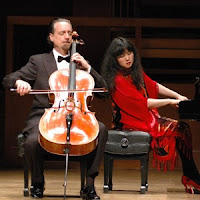
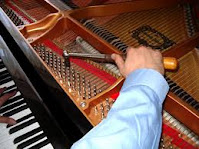
On top of that, another “out-of-tune” issue is when a piano sound and another non-piano sound (like strings, electric piano, choir, etc) are layered together (played at the same time on the same key), those two sounds are out of tune with each other when playing certain notes. This is because the non-piano sound (strings) does not have stretch tuning (stretch tuning is piano only) and the piano sound is stretched. All of this is just a way to say, if you want all of the notes to be in tune when two instrument sounds are played/layered together (piano and a second non-piano tone), then the FP-30 may disappoint you on certain note combinations. I definitely hear this sharp (out-of-tune) problem clearly and the piano sound is sharp against the non piano sound (strings, etc) when just a single key is played with 2 sounds layered together. If the tuning issue I am talking about was only very slightly out of tune when playing multiple keys or one key, (this is typical of stretch tuning method) then I would not bring it up and actually all would be good and the overall piano tuning would be quite nice. But this tuning anomaly is noticeably (sharp) to my ears so it is definitely worth mentioning. I will say that for some people who don’t play well, don’t understand when a piano is actually “in tune” or out of tune when playing notes, don’t layer two sounds together on the FP-30, or have an acoustic piano that they play which normally goes out-of-tune, then they may not notice this FP-30 tuning issue at all and you will be just fine. But for other people who have either very good pitch, have played on good, well tuned (properly stretched) acoustic pianos, or are more intermediate to advanced players who play nicely tuned pianos, then they may (or may not) be unhappy with the FP-30 with regard to the tuning issue I have mentioned here. Actually, because various strings in acoustic pianos regularly go out of tune because of humidity & temperature changes, a lot of good pianists get used to hearing their pianos become a bit out of tune, so they don’t complain and just live with it until they get their piano tuned up again….but it does not mean they like it:). With regard to the FP-30, playing octaves on it is just fine and perfectly in tune and many other intervals and note combinations have no tuning problems. But for me, just having a few poorly tuned (or over-stretched) intervals or note combinations is bothersome and very distracting. If there was a way to turn off or modify the stretch tuning feature then, as I mentioned earlier, this would take care of that issue…but I see no way to do that which means the FP-30 will be permanently “out of tune” (or sharp) on different notes, and for me…I do not like a piano to be noticeably “out of tune” (sharp or flat). It prevents me from really enjoying my music. It’s like fingernails on a chalkboard…they do not go together well. On acoustic pianos, when some strings are poorly stretched or out of tune, you can just get them re-tuned assuming the strings and tuning pins are in good shape. But on a digital piano you are at the mercy of the original recorded sound unless there are special parameters that allow for individual note tuning or stretch/temperament changes, which unfortunately are not available for the FP-30.
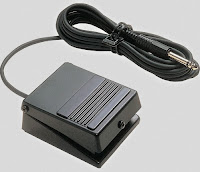 Pedaling on a piano is a “secret sauce” of any music in my opinion because without good pedaling and sustain decay & volume time (the time it takes for the piano sound to fade out while holding down the sustain pedal), the music would not sound as real and can be choppy at best. So when it comes to pedaling technology and the electronics associated with it, this is an area not to be overlooked in my opinion, even in this low price range. The Roland FP-30 is very good with its pedaling and has longer sustain/decay times than many other brands and it’s noticeable, especially in the middle to upper octaves of the keyboard where you also hear the pedal resonance reproduction. So when you hold the sustain pedal down after playing one or more notes, the sound sustains out very nicely and helps the music sound more beautiful and alive. For me personally, this is an essential part of piano playing but won’t typically effect a beginner student or player. A beginner is learning other things before they ever get to the pedal(s) so pedaling realism is not
Pedaling on a piano is a “secret sauce” of any music in my opinion because without good pedaling and sustain decay & volume time (the time it takes for the piano sound to fade out while holding down the sustain pedal), the music would not sound as real and can be choppy at best. So when it comes to pedaling technology and the electronics associated with it, this is an area not to be overlooked in my opinion, even in this low price range. The Roland FP-30 is very good with its pedaling and has longer sustain/decay times than many other brands and it’s noticeable, especially in the middle to upper octaves of the keyboard where you also hear the pedal resonance reproduction. So when you hold the sustain pedal down after playing one or more notes, the sound sustains out very nicely and helps the music sound more beautiful and alive. For me personally, this is an essential part of piano playing but won’t typically effect a beginner student or player. A beginner is learning other things before they ever get to the pedal(s) so pedaling realism is not 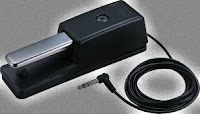 important until later on. But when you are playing at a higher skill level, then all this extra pedaling “stuff” does make a real difference. Most name brand digital pianos do a pretty good job of pedaling in this price range but Roland has the ability for what they call “continuous detection” pedaling which allows incremental changes in the amount of sustain you get when you press the pedal down or let it up at different positions. Many pianos just have the “on & off” pedaling which is a basic sustain function on digital pianos and not something that regular pianos have. On the Casio portable pianos for example, using any single portable pedal only has the basic on-off feature. Kurzweil pianos only offer the basic on-off function regardless of what pedals you choose, so those pianos are very limited.
important until later on. But when you are playing at a higher skill level, then all this extra pedaling “stuff” does make a real difference. Most name brand digital pianos do a pretty good job of pedaling in this price range but Roland has the ability for what they call “continuous detection” pedaling which allows incremental changes in the amount of sustain you get when you press the pedal down or let it up at different positions. Many pianos just have the “on & off” pedaling which is a basic sustain function on digital pianos and not something that regular pianos have. On the Casio portable pianos for example, using any single portable pedal only has the basic on-off feature. Kurzweil pianos only offer the basic on-off function regardless of what pedals you choose, so those pianos are very limited. The single piano pedal (which is a small but nice square size) included with the FP-30 does not trigger the “continuous detection” pedaling. However you can purchase the optional upgraded Roland DP10 full size piano type pedal for another $35 which does trigger Roland’s full continuous detection pedal function for complete pedal sustain recognition. Also, Roland offers a matching optional compact FP-30 furniture style stand a triple pedal bar for a more permanent setting which is another $175 for both pieces and the triple pedal setup also triggers the damper pedal continuous detection sustain feature as well as soft pedal continuous detection. I believe most people who buy this FP30 piano will likely want the optional full size DP10 continuous detection pedal (at some point) if you are a more intermediate to advanced student or player. The single pedal that comes with the piano is still OK for other musical applications.
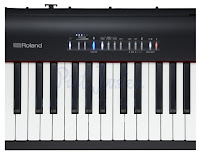 So what else can the new FP-30 do? Well…it can do a lot and definitely keep up with other portable digital pianos in this price range (under $700). It has 35 instrument sounds accessible from panel sound category buttons named Piano, Electric Piano, and Other. Within the categories are 6 acoustic piano sounds or sound combinations, 7 electric piano sounds, and 22 non piano instrument sounds in the “Others” button. The 3 piano tones are colorful with a lot of dynamic range and the electric pianos are also good. However, there is no separate “chorus effect” for the electric pianos and this can be an important effect to make some of the vintage electrics sound much more authentic. Oh well, I guess you can’t have everything:). The “other tones” such as strings, choir, guitars, organs, harpsichord, synth, pad, etc include a variety of instruments which are quite realistic and fun to have. The way you access those 35 tones is by holding the category button you want while pressing a specific key on the keyboard which selects the sound. Once you do that then you can play that sound on the keyboard. Although that process if fairly fast, other than looking in the owners manual for the sound position on the keyboard that you want, you would need to memorize the key to press for the sound that you want. There is no LED or LCD display screen on the control panel so there is no way to see what sound is actually being used. I was told that Roland may be coming out with an iPad app connected via Bluetooth on the FP-30 which will display all 35 instrument sounds on the iPad touch screen for easier viewing and selection. However, we’ll have to wait and see if this app will actually come out or not. It certainly would be helpful not only for the 35 instrument sounds, but also for seeing other functions too. Without an app for a connected Tablet, the sound selection process is somewhat cryptic because there is no user display screen. I don’t believe adding a small LED display would have cost much money and doing so would have helped the user immensely in being able to better select functions and features that are otherwise more difficult to find. This piano really does offer a lot of cool features but without a nice little display screen to more easily find and use them, it is disappointing.
So what else can the new FP-30 do? Well…it can do a lot and definitely keep up with other portable digital pianos in this price range (under $700). It has 35 instrument sounds accessible from panel sound category buttons named Piano, Electric Piano, and Other. Within the categories are 6 acoustic piano sounds or sound combinations, 7 electric piano sounds, and 22 non piano instrument sounds in the “Others” button. The 3 piano tones are colorful with a lot of dynamic range and the electric pianos are also good. However, there is no separate “chorus effect” for the electric pianos and this can be an important effect to make some of the vintage electrics sound much more authentic. Oh well, I guess you can’t have everything:). The “other tones” such as strings, choir, guitars, organs, harpsichord, synth, pad, etc include a variety of instruments which are quite realistic and fun to have. The way you access those 35 tones is by holding the category button you want while pressing a specific key on the keyboard which selects the sound. Once you do that then you can play that sound on the keyboard. Although that process if fairly fast, other than looking in the owners manual for the sound position on the keyboard that you want, you would need to memorize the key to press for the sound that you want. There is no LED or LCD display screen on the control panel so there is no way to see what sound is actually being used. I was told that Roland may be coming out with an iPad app connected via Bluetooth on the FP-30 which will display all 35 instrument sounds on the iPad touch screen for easier viewing and selection. However, we’ll have to wait and see if this app will actually come out or not. It certainly would be helpful not only for the 35 instrument sounds, but also for seeing other functions too. Without an app for a connected Tablet, the sound selection process is somewhat cryptic because there is no user display screen. I don’t believe adding a small LED display would have cost much money and doing so would have helped the user immensely in being able to better select functions and features that are otherwise more difficult to find. This piano really does offer a lot of cool features but without a nice little display screen to more easily find and use them, it is disappointing.
The FP-30 can also split any two sounds with one on the left hand and one on the right hand which can be useful in a number of ways depending on the music you want to play, as well as layer any two sounds together so they can be played together on the keyboard. Most digital pianos can do this but it is easy to do on the FP-30 and sounds great when used in an appropriate way. As an example, you can layer acoustic piano and strings, harpsichord and organ, or electric piano and synth. You can also adjust the relative volume between the 2 split or layered sounds so that the volume of the sound combinations are balanced well. There is also a built-in “drum machine” which can play 8 different rhythms including Rock, Jazz, Latin, and other beats. Having a drum machine to use with your songs is a really nice feature when learning different rhythms or playing along with a drummer to help with your timing, or just make you sound better than you really are:). You have full control over the tempo or speed of that rhythm and can adjust it easily from panel buttons faster or slower. I happen to enjoy playing along with good drum rhythm patterns (or real drummer) and I encourage students to do the same thing. The FP-30 also has an adjustable digital metronome as well and that feature is also very helpful for students and players learning to play a new song. But the actual drum rhythms which are accessible from holding a panel button and then accessing the specific drum rhythms you want by touching a specific key on the keyboard, go a step further than just having a simple metronome by allowing someone to have actual percussion accompaniment experience. This can be a valuable asset to have if you should progress in your music to become an accompanist, playing in a school band, or are playing professionally out at a venue somewhere. However, once again, you need to look in the owners manual to find which key selects the drum pattern or feature that you want and you would need to memorize these key positions so that you don’t always have to look in the manual.
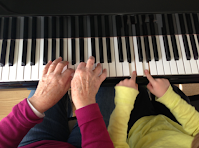 Other usable and sought after features include being able to transpose the key you are in up or down and the FP-30 can do this for one complete octave. Again, you would need to hold down a panel function button and then press a specific keyboard key to access the new key, but this is also true of other many other digital pianos in this price range that have transpose functions. It’s not the easiest way of doing it, but it’s definitely better than nothing. The FP-30 also allows the user to have both adjustable ambience effects (reverb) and adjustable brightness control so that you can make the overall sound of the piano more mellow or more bright depending on what your ear likes to hear. The FP-30 has 5 levels of key touch adjustment from easy to hard so depending on how you like to play the keys, the touch sensitivity can be adjusted to your taste. Another feature that can be nice to have for 2 students (or teacher-student) who would like to practice at the same time is called “Twin Piano.” This feature electronically splits the 88 keys into two identical 44-note keyboards which are tuned and play the same as each other. In other words, the bass section becomes the same as the treble section so that when 2 people need to play the same thing, as long as they can do it within a 44-note range then they can play and practice together. This is a practical function but not something you would need if it were just one person playing or practicing at a time on a regular basis. Again, to select these features you would need to know precisely which key of the 88 keys on the piano to select to activate the features and you would need to study the keyboard chart in the owners manual to know which key needs to be pressed.
Other usable and sought after features include being able to transpose the key you are in up or down and the FP-30 can do this for one complete octave. Again, you would need to hold down a panel function button and then press a specific keyboard key to access the new key, but this is also true of other many other digital pianos in this price range that have transpose functions. It’s not the easiest way of doing it, but it’s definitely better than nothing. The FP-30 also allows the user to have both adjustable ambience effects (reverb) and adjustable brightness control so that you can make the overall sound of the piano more mellow or more bright depending on what your ear likes to hear. The FP-30 has 5 levels of key touch adjustment from easy to hard so depending on how you like to play the keys, the touch sensitivity can be adjusted to your taste. Another feature that can be nice to have for 2 students (or teacher-student) who would like to practice at the same time is called “Twin Piano.” This feature electronically splits the 88 keys into two identical 44-note keyboards which are tuned and play the same as each other. In other words, the bass section becomes the same as the treble section so that when 2 people need to play the same thing, as long as they can do it within a 44-note range then they can play and practice together. This is a practical function but not something you would need if it were just one person playing or practicing at a time on a regular basis. Again, to select these features you would need to know precisely which key of the 88 keys on the piano to select to activate the features and you would need to study the keyboard chart in the owners manual to know which key needs to be pressed.
 Almost all digital pianos these days have the ability to record what you are playing and the FP-30 is no exception. It has a 1-track MIDI recorder to record and save one song (maximum) at a time and then be able to play it back. This is a valuable musical tool because the student can hear what they played and be able to know how it actually sounded, and I use this feature often in my piano teaching studio. There are digital pianos with the ability to record 2 separate
Almost all digital pianos these days have the ability to record what you are playing and the FP-30 is no exception. It has a 1-track MIDI recorder to record and save one song (maximum) at a time and then be able to play it back. This is a valuable musical tool because the student can hear what they played and be able to know how it actually sounded, and I use this feature often in my piano teaching studio. There are digital pianos with the ability to record 2 separate  tracks (left & right hand separately) which I like better and wished the FP-30 also had, but having one track is usually enough for most people. One of the upsides of the FP-30 MIDI recording feature is that the recording can be saved on a USB flashdrive which you insert in the back of the piano. In this way you can build up a library of songs rather than lose them or only be able to store a limited number in the piano. Beyond the MIDI recording and
tracks (left & right hand separately) which I like better and wished the FP-30 also had, but having one track is usually enough for most people. One of the upsides of the FP-30 MIDI recording feature is that the recording can be saved on a USB flashdrive which you insert in the back of the piano. In this way you can build up a library of songs rather than lose them or only be able to store a limited number in the piano. Beyond the MIDI recording and 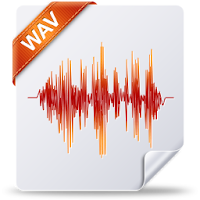 playback, the FP-30 does something very cool which the portable Casio PX-160 ($549US), Yamaha P-125 ($649), and Kawai ES110 ($699) cannot do. The Roland FP-30 has the ability to playback full multitrack General MIDI (GM2/GS) song files as well as CD audio wav files through a USB flash drive. This allows unlimited access to literally thousands of songs on the internet for full General MIDI song files or music from your CD library to be played back on the FP-30 so that you can play piano along with the songs, and the playback music does sound great. You can even adjust the tempo of any MIDI designated song to be able to play it back slowly to learn the song at your own speed. The only downside to the song playback mode is that you cannot see song titles or song numbers because there is no display screen on the piano as I mentioned earlier. Ultimately the more features a piano has, the more important it becomes to have a display screen in the piano so you can see what’s going on. In my opinion the FP-30 should have had one in it, especially for song titles and other recordings/playback features and for me, the more info I can see right on the piano, the better and quicker I can access and operate the functions.
playback, the FP-30 does something very cool which the portable Casio PX-160 ($549US), Yamaha P-125 ($649), and Kawai ES110 ($699) cannot do. The Roland FP-30 has the ability to playback full multitrack General MIDI (GM2/GS) song files as well as CD audio wav files through a USB flash drive. This allows unlimited access to literally thousands of songs on the internet for full General MIDI song files or music from your CD library to be played back on the FP-30 so that you can play piano along with the songs, and the playback music does sound great. You can even adjust the tempo of any MIDI designated song to be able to play it back slowly to learn the song at your own speed. The only downside to the song playback mode is that you cannot see song titles or song numbers because there is no display screen on the piano as I mentioned earlier. Ultimately the more features a piano has, the more important it becomes to have a display screen in the piano so you can see what’s going on. In my opinion the FP-30 should have had one in it, especially for song titles and other recordings/playback features and for me, the more info I can see right on the piano, the better and quicker I can access and operate the functions.
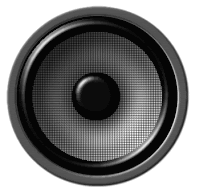
The internal speaker system on the FP-30 is rated at 11 watts per side in stereo for a total of 22 watts of power going through 2 good speakers in a separate sound chamber inside in the piano which is unusual to find in this price range. The internal speaker system was surprisingly full and loud and really puts out a good volume especially as compared to other portable digital pianos under $700 such as the Yamaha P-125 and Kawai ES-110 each with a total of 14 watts of power and the Casio PX-360 each with a total of 16 watts of power. However it should be noted that lower power does not necessarily mean lower volume because the type of internal speakers being used and the quality of the amplifier circuitry does make a difference, so the volume and fullness of the piano sound even on 14 & 16 watt digital pianos, like the ones I just mentioned, are still very impressive. Even though the FP-30 puts out a maximum of 22 watts of power, it only consumes 8 watts of power when played at about medium or half volume. As you raise the volume of any digital piano it will consume more energy. The sound from the internal speaker system will definitely fill up a room and has good bass response too.

As far as connectivity in the FP-30, other than USB output to computer & Tablet along with USB flash drive input which are very nice features which I previously mentioned, the FP-30 also has 2 headphone jacks with one being a mini jack and the other a 1/4″ headphone jack. If you want to connect to an external sound system you would need to do that through the 1/4″ stereo headphone jack. Unfortunately, there are no direct line outputs to connect with external speaker systems like there are on other portable digital pianos such as the Kawai ES110 ($699). I personally much prefer separate line outputs to external speakers because I really don’t want to connect with the headphone jack as it is not normally as efficient and the headphone jacks are typically on or near the front of the piano as opposed to line out jacks normally being on the back of the piano where they should be. 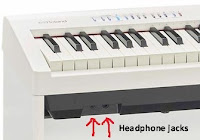 The internal speaker system is good enough overall if you are playing it at home or in a smaller room so that you definitely don’t need to connect to external speakers in those situations. Another useful connector that is not on the FP-30 is an audio input jack. This is helpful to connecting to external audio devices and running the sound through the piano such as from an iPad, Android, CD player, computer, iPod, etc. I will say that the Yamaha P-125 and Kawai ES110 do not have input jacks either so Roland is definitely not alone in this way, but it would have been well worth it in my opinion. Casio does have both line out and audio input jacks in their new CGP-700 ($849 internet discount price) which is an impressive portable piano but also a bit more money than the other ones I’ve mentioned, but it does include a furniture stand at that price with a built-in 20-watt stereo speaker system that gives the entire piano about 40 watts of power.
The internal speaker system is good enough overall if you are playing it at home or in a smaller room so that you definitely don’t need to connect to external speakers in those situations. Another useful connector that is not on the FP-30 is an audio input jack. This is helpful to connecting to external audio devices and running the sound through the piano such as from an iPad, Android, CD player, computer, iPod, etc. I will say that the Yamaha P-125 and Kawai ES110 do not have input jacks either so Roland is definitely not alone in this way, but it would have been well worth it in my opinion. Casio does have both line out and audio input jacks in their new CGP-700 ($849 internet discount price) which is an impressive portable piano but also a bit more money than the other ones I’ve mentioned, but it does include a furniture stand at that price with a built-in 20-watt stereo speaker system that gives the entire piano about 40 watts of power.

A very unique FP-30 feature in this low priced portable digital piano is the addition of Bluetooth (wireless) MIDI connection with iPad or Android MIDI apps and also with specific apps which allow for downloading and accessing sheet music on your tablet device and then being able to automatically see & turn the digital music pages with a foot pedal on the piano using the optional triple pedal bar connected to the optional furniture stand. Bluetooth MIDI is very cool because then you do not have to use a USB cable to connect the iPad/Tablet to the piano USB output. However, since there is no Bluetooth audio in this model, you cannot hear the audio (music, voice, etc) coming from an external device into the piano speakers. You would have to connect the audio of the iPad/Android app or computer to an external speaker by using a cable from the tablet to the external speaker. With the advent of inexpensive Bluetooth speakers these days (I have 2 of them in my studio) you can always hear the audio portion of the app through a Bluetooth (wireless) speaker which is a good thing because the built-in small speakers in an iPad or Android usually aren’t so good when it comes to reproducing a full rich stereo sound. So the Bluetooth connectivity can be useful if you take advantage of it but I would like to have seen the inclusion of Bluetooth audio as well, especially being able to hear it when using headphones in the piano.
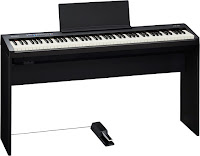
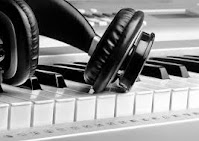
Overall this new Roland FP-30 is a welcome addition in this price range and I consider it to be a worthy competitor to the other major brands especially in the area of key action, piano sound authenticity, and pedaling function. When it comes to the fundamentals of piano playing, the FP-30 should be a definite consideration in my opinion for someone wanting a piano which focuses on the piano playing experience. The additional features in this model are all good including auto power off which turns the piano off after the it has been on and not played for awhile along with panel lock which prevents the features in the settings you did from being accidentally changed by someone touching the buttons. The cabinet is lightweight (31 lbs), easy to carry (51″x 12″ deep x 6″ high) looks very attractive in either a well built satin black or satin white cabinet which includes a large and supportive music rack, and has the ability to do many fun things. Of course, the FP-30 does not have a built in key cover so the keys are always exposed, although you can buy a fitted vinyl or cloth cover to put over the keyboard. But this is true of just about all the portable digital pianos. In my opinion, the FP-30 is a very good piano but it is not a great piano only because of the sharp “stretch tuning” to my ears, having no audio outputs which requires using the stereo headphone jack for an output, and having no display screen to more intuitively operate the piano functions. I also forgot to mention earlier that unfortunately, the FP-30 has somewhat weak volume output for stereo headphones. I have a great pair of stereo headphones and use them for private practice and examination of digital pianos and they project high volume on the other brands of digital pianos in this price range, even at medium volume settings on those pianos. But for some reason the FP-30 does not push my headphones much in terms of volume power coming out of the FP-30 headphone jacks and I have to max the FP-30 volume just to get an OK volume/fullness through the headphones. I don’t know what causes this issue but it can be a limitation for people who use headphones a lot and like bigger, fuller volume. I even tried other headphones on the FP-30 including Roland headphones and the results were the same. However, with all the positive things this portable digital piano has and does, it may be the perfect choice for you…and I must say, the internal speaker system in this model is quite good and really sounds big and full when the piano sounds are played through it. Roland is a great brand and has for many years had an excellent reputation in the music industry for reliable and innovative product, so the FP-30 should last for many years including having the Roland 3 year parts and 2 years labor warranty for your protection.
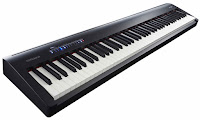 I really do enjoy playing many Roland digital music products including a variety of digital piano models, digital drums, guitar products, recording and audio gear, and other exciting technology products they produce. I have played and owned Roland digital pianos for many years and like that company very much. I do recommend the FP-30 model even with the issues I described earlier, but as I said before, many people may be just fine with the FP-30 because we all have different ears and different uses for a digital piano and it is why a lot of you may like the FP-30 for just the way it is tuned and how it works. There are many good choices out there including the very popular Kawai ES110 at $699 discount price (click on link below for my review), and especially the new Casio PX-S3000 for 2021 at $849 internet price. The newer Casio PX-S3000 is a very impressive portable digital piano in a number of ways and for just another $100 it very impressive in comparison to the new current model Roland FP-30X. Check it out at the link below. Be sure you do your research and then contact me before you make a purchase anywhere and I can help you with more details on which piano may be best for you and also how to get them for even less money (US only) than Amazon, internet, or stores.
I really do enjoy playing many Roland digital music products including a variety of digital piano models, digital drums, guitar products, recording and audio gear, and other exciting technology products they produce. I have played and owned Roland digital pianos for many years and like that company very much. I do recommend the FP-30 model even with the issues I described earlier, but as I said before, many people may be just fine with the FP-30 because we all have different ears and different uses for a digital piano and it is why a lot of you may like the FP-30 for just the way it is tuned and how it works. There are many good choices out there including the very popular Kawai ES110 at $699 discount price (click on link below for my review), and especially the new Casio PX-S3000 for 2021 at $849 internet price. The newer Casio PX-S3000 is a very impressive portable digital piano in a number of ways and for just another $100 it very impressive in comparison to the new current model Roland FP-30X. Check it out at the link below. Be sure you do your research and then contact me before you make a purchase anywhere and I can help you with more details on which piano may be best for you and also how to get them for even less money (US only) than Amazon, internet, or stores.
Casio PX-S3000 Review
If you want more info on new digital pianos and LOWER PRICES than internet discounts, please email me at tim@azpianowholesale.com or call direct at 602-571-1864.




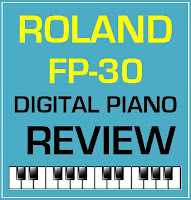










Hi Tim,
I'm looking for my first piano and have found your site very helpful. Up to this point I was expecting to follow your recommendation and buy a Kawai ES100 but now this Roland is due to be released, which would you recommend for a new student? Do you still prefer the ES100 for piano playing (as opposed to the other functions?)
Thanks again, Colin
that's a tough call because both pianos are really good and they are at the same price too. If it wasn't for this new Roland then I would say go with the Kawai. But when the FP30 comes out then there are good reasons to get that one instead. Both pianos have different piano playing personalities with the Kawai having a slightly lighter key action and the Roland a bit heavier. Some people like it one way and some people the other way. I don't think you can go wrong with either model.
Ok but regarding the sound quality of the Grand Piano, don't you think the one in the ES100 sounds more realistic and less "electronic" ? And what about the E.piano and the jazz organ? Which is better according to you?
different not better
not a fair comparison, the Roland is superior, but these pianos are in Two different price ranges. The PX160 would need to be compared to pianos less than $600 and closer to $500 for it to be fair the the PX160
Hello,
Great review, this looks like a great piano for learning to play. Can you please tell us what instruments (voices) are available on this piano? I know you mentioned some of them, but is there a list with all 35 voices? I can't seem to find such a list even on Roland's site, and it may play a part in my decision of buying a piano.
Thanks a lot,
Dan
Yamaha p-115 vs Roland FP-30? Deciding between these two. Thanks for the help.
Deciding between Roland FP-30 or Casio PX350? Any suggestion?
Thanks
FP-30 vs PX760 vs DGX660 vs F-20…
Please help me to pick one….
I do have some specific suggestions on these 2 pianos but would rather discuss by email or phone (if you live in the US). Please contact me and then I can help you with your decision.
Hi Tim. In Australia the ES100 is $800 (or $1000 with stand + pedals) vs. the FP30 which is $950 (or $1200 with stand + pedals). They each have a 5yr warranty. I'm looking to buy for my 7yo who has been learning for nearly 2yrs. What would you recommend for the next 5yrs or longer? I have heard that beyond 5yrs the Roland brand in general may have a higher repair rate and repair bill than the Kawai?
FP30 vs PX760 vs DGX660 vs F20….
Please help me to pick one…..
Hello. Can u help me compare sound quality and key feel maybe some good features the fp30 vs f140r.
same piano key action and piano sound chip in both models, but different digital features and internal sound system
my reply is late because of just being busy, but the Roland FP30 is a much more realistic piano as compared to the Casio PX350 in terms of key action, piano sound, and pedaling. Both pianos have good functionality and features, but the if you're wanting the most realistic piano playing experience, it would be the Roland FP30 in a similar price range, although the Kawai ES100 is also a great option.
Please help me compare Roland FP 30 with Kawai ES 8?
Please ignore the price. I am interested in the key action and piano sounds.
Thank you
you are kidding about the question…right? The ES8 offers a much more realistic piano playing experience in terms of key action and piano sound realism than that of the Roland FP30, along with many more functions and features on the ES8. But the ES8 is nearly 3 times the price (US dollars) of the Roland, so it better be a lot better. But for its low price the new Roland FP30 offers a lot for the money and for many people it may be enough to satisfy their musical needs.
Thanks for great review, I'm really considering to buy these keyboard. I have one question for you. Maybe it's obvious but I'd like to be sure. Does the USB connection allow tranfer of informations about played keys to PC? Or in by other words, is it possible to use these keys as MIDI controller via USB with software as Ableton or Synthesia? Thanks for your time.
Vasek
Same question here..
Very hard to decide 🙂
yes, this piano can be a USB MIDI controller
Hi Tim,
What are your thoughts on the Yamaha p-115 and the Roland fp30? I've narrowed it down to those.
Thanks,
Ann
How is the key action of this digital piano when compared to RH3 action of KORG?
Thanks a lot for this review! I am wondering, if it would be possible to disconnect the sensor on one of the output plugs that turns off the speakers when you insert the jack input? I know this would require taking apart, but would it be possible? Then you could have one of the two headphone jacks that could serve as a line out while keeping the internal speakers on.
My preference is the Kawai ES100 which offers a more realistic and better piano playing authenticity as compared to the Roland or Yamaha. Next in line I would choose the Yamaha.
I like both key actions but I prefer the Roland. However my personal preference is the action in the Kawai ES100
I don't know if this is possible but would not recommend it as it may void the factory warranty.
It would be great if you could post a sound clip of what you perceive as the out of tune. The stretch tuning will do that some, but it would be really helpful to hear it. Roland is a great name and I have a hard time believing they would make such a mistake. Thanks!!
That's what my research boiled down to, the P115 and the FP30. I keep moving from one to the other. Though, my past keyboards have all been Roland, so I'm kinda biased.
Thanks for another great review. Just a quick question – if you are planning to use the piano as a usb midi controller then the stretch tuning issue you mention is irrelevant, right?
Are the drum rhythms on the ES100 as good as the Roland FP30's? I know you get more with the ES100 but are they a selling point?
Are there any features the ES100 doesn't have in comparison to the FP30?
With the tuning issue, does that mean that the FP50 sounds out of tune to you? I think the sound engine is the same with the FP30 and FP50.
A MIDI controller controls other MIDI devices and instruments and those external MIDI items should
not be affected by the internal sounds/effects of the MIDI controller
Hi Tim, how are the acoustic and electric piano sounds of the FP30 compared to the Casio PX-560?
Hi I want to buy a new portable digital piano and have my choice narrowed down to ES100 and FP 30.Can you suggest which will be better for me? I have learnt classical for 3+ years and am looking for an upgrade over my Yamaha CLP 330 which has a GH3 action keyboard.(Unfortunately it is in my home so can't bring it with me as I am out of town for job purposes). I am looking for a piano..so other sounds and all dont matter to me.I require a good authentic touch and sound.
How about FP-50? Have they the same out-of-tune problems?
Hi Tim, thank you so much for your reviews, I'm finding them more honest and helpful than other one's I've read. I'm looking to buy a digital piano that will feel and sound great for playing classical music, but that can also be used as a MIDI controller, so that I can also use the piano for electronic music production (this rules out the Kawai ES100 and Yamaha P115 right?), I guess some cool on-board effects may be nice for that too. Although I haven't played much in recent years, I've taken piano lessons throughout my childhood, so I'm pretty sensitive to the sound and feel.
I tried out the Yamaha DGX 660 and did not like the feel, so that's ruled out.
I really liked the feel and sound of the Roland FP 30, but I'm concerned about its lack of features – at the very least though, it can be used as a MIDI controller, right?
I like the extra features on the Casio CGP 700, and the feel was pretty good, though I didn't like it as much as the Roland, hence I'm torn. I tried out the Casio PX 350 as well, but found the response to be slower, which is kinda strange cause I thought it should feel the same (?). I haven't had a chance to check out the Casio PX 360 yet – I know the sound is supposed to be slightly better than the CGP 700, but is the feel any different?
Am I missing any other models around this price range that I should consider? I also came across the Studiologic SL88 or NUMA NANO in my online search. Are they worth considering?
Am I trying to get too much out of a single instrument at this price range?
Sorry I know this is a really long question, but I would really appreciate any help!
Two questions:
1) When you record your playing and play it back, can you play on top of it?
2) You say the DP10 pedal triggers Roland's full continuous detection pedal function. Do you think it would be triggered with the twice cheaper M-Audio SP-2 (16£ on Amazon)?
question 1. Yes
question 2. no
Hi Tim first of all thanks for these great reviews. I have the same question like many of the above whether it will be a Kawai ES 100, a Roland F 30, a Casio PX160 or a Yamaha P115. But my question is somewhat different in the sense that I am still an absolute beginner and a 65 years old male. I was told that age doesn't count. I am keen to start learning, although I have certain reserves on my abilities as an adult learner. So I am asking your advice first of all to know if in your opinion I am already too old to start learning and the second one which of the above models do you think is more appropriate for my now not so dextrous hands. Thanks
Hi,
I am a classical pianist by training and bought a Roland FP-30 recently. I was really disappointed by the quality of the piano sound through the internal speakers, it does sound electronic and empty. As a matter of fact bases and trebbles sound OK but keys located in the middle of the piano (the ones we obviously use the most) sound horrible through the speakers and are very far away from an accoustic piano. When I use a Roland headset, the sound is absolutely great though. If you are looking to buy a digital piano that has quality piano sound through its external speakers, I am sorry but I do not agree that the Roland FP-30 are is a great option as it really is not. I am looking to buy external speakers that will provide the same feeling as when using headphones but won't make the same mistake of buying them without first trying them out in the store…
Thanks for a fantastic and thorough review. I bought the Fp30 and had a strange mid-range resonance or phase shifting problem when connecting to a mini amp. Any experience with this? Also, do you know if there's an update yet that allows speakers and headphone jack to output simultaneously?
Hello,
I am a current user for this model, and I am wondering if Kawai ES110 could be better in keyboard response. FP-30's key board is not very response when dealing with repeating staccatos, and it's kind of hard rather than heavy compared with grand piano. May I know any model with better actions? Thanks!
Have you compared they key feel and action of the FP30 with the Casio's PX 350? I am currently comparing the two. It seems to me that the PX 350's simulated ivory AND ebony is more natural and non-plastic than the FP30's. Is that your sense?
As for action, the Roland's is stiffer but I did not detect much of an escapement. How would you compare the action with that of the PX 350?
Thanks (trying to make up my mind). Mark
Dear Tim,
could you post some audio example where you hear that the FP30 is out of tune? If you are able to do so that detailed description about the out of tune, you should be able also to post it. Only for demostrating to the people that don't have the possibility to test a digital piano before buying to hears how much that could be a problem (or not). Thank you. Luca
Funny, people comparing the px-160, Yamaha 125/115 to the fp-30, no comparison all the way around, the fp 30 is in a much higher league of it's own..
No comparison, I owned the px-350 and it's not even close, unless you enjoy noisy clanking keys of the px-350 and besides the fp-30 sounds so much cleaner